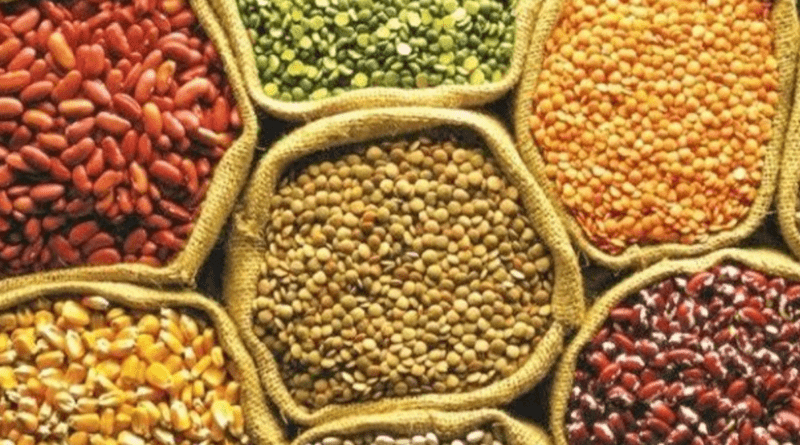When You See That The Indian Government Has Now Started Importing Pulses From Brazil.
To source urad and tur dal for meeting local requirements, the government has had several negotiations with Argentina and Brazil.
India has begun sourcing urad dal from Brazil for the first time in order to offset a shortage in domestic supply and diversify its reliance on imports from a small number of nations.
According to sources, the first shipment of urad dal from the South American nation, weighing over 3000 tons, has arrived. “As relying solely on one country presents a risk, we are collaborating with Brazil and Argentina to import urad and tur,” the official stated. He estimated that India would probably import 20,000 metric tons of urad from Brazil this year.
To source urad and tur dal for meeting local requirements, the government has had several negotiations with Argentina and Brazil.Under a memorandum of understanding (MoU), India is now limited to importing urad dal from Myanmar, where supply has been disrupted due to internal security concerns.
According to an official, while Brazil and Argentina have suitable weather for growing pulses like urad and tur, which are presumably produced there for sale to India, the local consumption of pulses in these South American countries is quite low.2.98 million metric tons (MT) of pulses were imported by India in 2023; these included 1.51 MT of lentil, 0.77 MT of tur (pigeon pea), and 0.59 MT of urad (black gram), primarily from Canada, Myanmar, Mozambique, Tanzania, Sudan, and Malawi.
Yellow Dal may be imported duty-free up until April 30, which is the bill of lading deadline (delivered on board). Three types of pulses—tur, urad, and masoor—are now subject to zero import duties through March 2025 as part of the government’s consistent import policy, allowing farmers in those nations to plan ahead and cultivate pulses.Currently, the nation produces 28 MT of pulses, which is more than enough to satisfy domestic demand.
However, “there is a slight mismatch” between the production and consumption of the three types of pulses—tur, urad, and masoor—according to reports.Prior to the retail prices of tur skyrocketing to Rs 200 a kilogram in 2016, India and Mozambique had inked an MoU for the import of 0.2 MT of arhar annually for five years.
September 2021 saw the five-year extension of this Memorandum of Understanding.India and Malawi signed an agreement in 2021 to buy 50,000 metric tons of turpentine annually for the following five years.
India has agreed to buy 0.1 MT of tur and 0.25 MT of urad from Myanmar through 2026 as per the terms of the MoU.For several months now, pulse inflation has been in the double digits.Pulses’ inflation decreased to 19.54% in January from 20.73% in December of the previous year, while the Arhar kind of pulses saw a price increase of 39%.Other pulse kinds had price increases last month as well, including moong (12.62%), gram (13.65%), and Urad (13.77%).The crop year 2022–2023 had record pulse production of 26.05 MT, of which chana (gram) accounts for 50%.
The nation has been able to supply its own moong and chana varieties of pulses.




